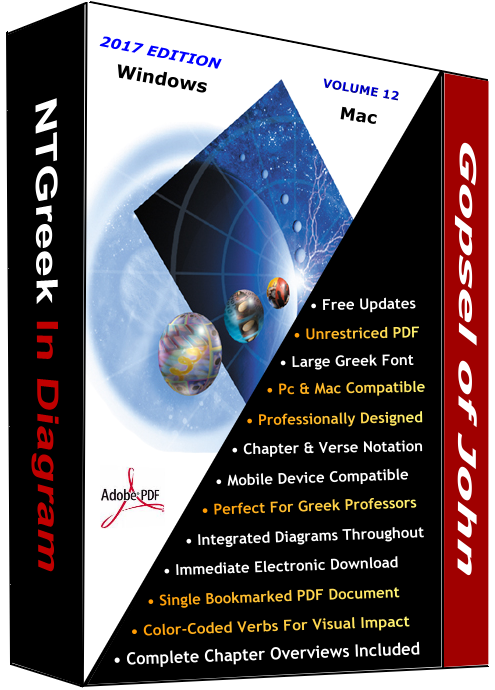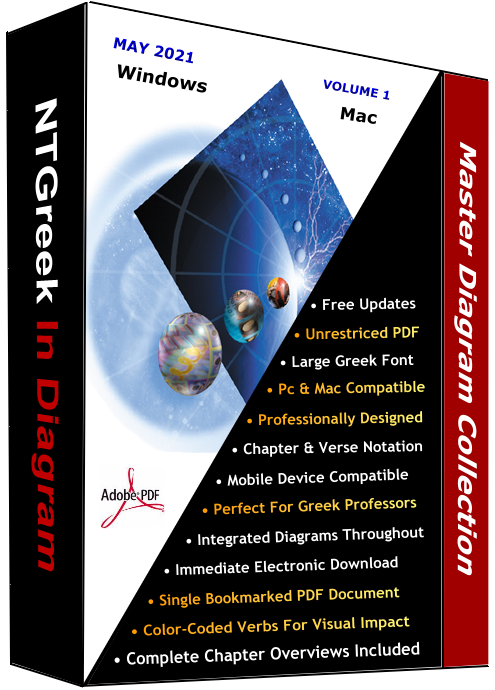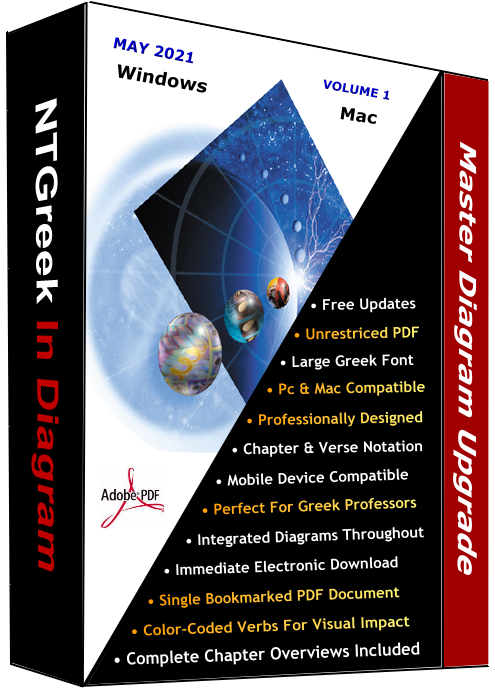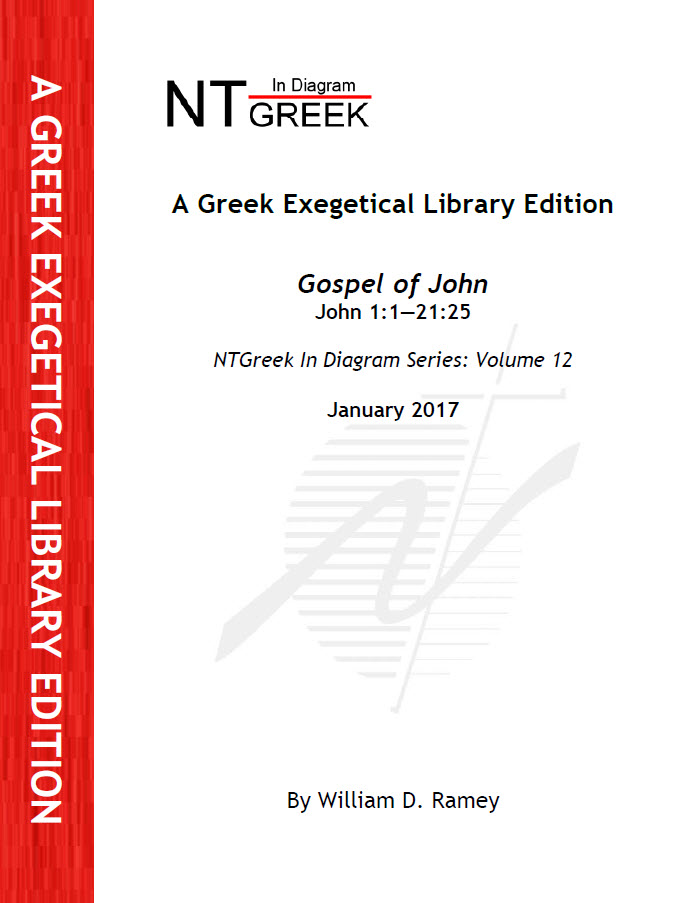

Title:
Gospel of John (1:1--21:25)Series:
NTGreek In Diagram: Volume 12Edition:
2017 EditionLast Update:
December 21, 2016ISBN-10:
1-939762-26-XISBN-13:
978-1-939762-26-XLanguage:
Greek diagrams with English commentsFormat:
Electronic downloadable PDF bookmarked documentLength:
752 pages (including overviews and "printer-friendly" pages)Price:
$8.95 USDThe Gospel of John develops an exciting Christology that is unique from the Synoptic Gospels: the Logos became flesh in Jesus Christ (Jn. 1:14-18). The apostle John carefully chose the Greek term "logos," for the term indicates the communicative revelation of the Father both in words and works; so much so that Jesus stated to Philip within hours of His crucifixion, "Have I been with you, and you have not come to know Me, Philip? He who has seen Me has seen the Father; how can you say, 'Show us the Father'? Do you not believe that I am in the Father, and the Father is in Me? The words that I say to you I do not speak on My own initiative, but the Father abiding in Me does His works" (Jn. 14:9-10).
The Gospel of John has been read and cherished throughout the centuries more than any of the other Gospels. Portions are read by beginning Greek students becuse it is one of the easiest texts to read in the entire Greek New Testament. The only Greek text easier to read than the Gospel of John is the First Epistle of John. Both writings' vocabulary is very basic and simple. However, because John includes many dialogues in his Gospel, a plethora of historical presents jump from the page that elevate and vividly portray both the actions and words of the characters.
The Gospel also abounds with asyndetons, and rhetorical asyndetons that especially appear in his recorded dialogues. NTGreek abounds with so many conjunctions, and thus the abundance of rhetorical asyndetons in the Gospel is all the more striking. As Smyth states, "rhetorical asyndeton generally expresses emotion of some sort, and is the mark of liveliness, rapidity, passion or impressiveness of thought" (Smyth and Messing, Greek Grammar, p. 484). The lack of a conjunction between two words, word groups, or clauses actually binds the juxtapostional thoughts closer together, and thus a very tight cohesion is formed. The diagrams clearly indicate asyndetons by a closer knit dotted line, thus denoting the juxtaposed elements' unity.
Because of the few brief above reasons, the Gospel of John is a delight to read, whether for the beginning Greek student or the seasoned reader. I recommend that this Gospel should be one of your first purchases among the NTGreek In Diagram diagram sets.

 The Gospel of John is also part of the NTGreek In Diagram's
Master Diagram and Master Diagram Upgrade Collections. The Collections include
all diagrams in a single convenient bookmarked PDF document that makes navigation incredibly easy.
The Gospel of John is also part of the NTGreek In Diagram's
Master Diagram and Master Diagram Upgrade Collections. The Collections include
all diagrams in a single convenient bookmarked PDF document that makes navigation incredibly easy.
If you are a Greek professor or instructor and desire more information about group discounts, please contact me. Several Greek professors and instructors encourage their students to purchase the diagrams and use them as part of the class curriculum.
The following screen shots are representative pages from the Gospel of John. The purchased diagram set includes all the diagrams. Click on any thumbnail to view its larger image.

 Cover Page
Cover Page Title Page
Title Page Jn 1:26-28
Jn 1:26-28 Jn 2:1-4
Jn 2:1-4 Jn 3:10-12
Jn 3:10-12 Jn 4:4-6
Jn 4:4-6 Jn 5:11-13
Jn 5:11-13 Jn 5:41-44
Jn 5:41-44 Jn 6:30-31
Jn 6:30-31 Jn 7:12-15
Jn 7:12-15 Jn 8:12-13
Jn 8:12-13 Jn 8:33-35
Jn 8:33-35 Jn 9:18-19
Jn 9:18-19 Jn 10:3b-6
Jn 10:3b-6 Jn 11:38-39
Jn 11:38-39 Jn 12:14-16
Jn 12:14-16 Jn 13:29-30
Jn 13:29-30 Jn 14:8-10a
Jn 14:8-10a Jn 15:25-27
Jn 15:25-27 Jn 16:18-19
Jn 16:18-19 Jn 18:22-24
Jn 18:22-24 Jn 19:11-12
Jn 19:11-12 Jn 20:17
Jn 20:17 Jn 21:7-8
Jn 21:7-8